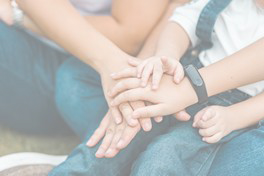 Attachment vs Attunement Wounds
Attachment vs Attunement Wounds
by: Sam Bearer, LPC
Attachment versus attunement wounding is a topic I have done a lot of thinking about recently. I have noticed the intersection of these two kinds of psychological wounds in my own work and in the context of client sessions. When we talked about these in school, I tended to lump them into the same category, but they are quite different. Even though they often come together, they do not always. Taking time to distinguish between the two can be extremely helpful.
An attachment wound occurs in early childhood development.
It is an experienced lack of consistent, appropriate care from a caregiver to a child. This gives rise in the child to several different styles of relating. I am very briefly summarizing my understanding here, but there is much more reading and self-educating you can do on this. If care is inconsistent, a child will display anxious attachment. The child is unsure if care is coming when he/she needs it. If negligent care is given consistently when child’s need is clear, a child displays avoidant attachment. The child attempts to learn to do without a caregiver’s attentions. If care is consistently inappropriate to the child’s needs and level of development, the child will display a disorganized style of attachment. He/she will sometimes display anxious attachment and other times avoidant attachment, depending on the needs expressed and/or the approach the caregiver takes toward the child. These wounds and the subsequent style of relating solidify through early childhood if the caregiving remains unaffected by the child’s initial non-verbal and later verbal signals.
An attunement wound by contrast usually takes place in later life (late childhood, adolescence, and adulthood).
These are characterized by a lack of appropriate response to an individual’s internal experience. A few examples might be
- An 11-year-old who does not receive praise for her full effort and achievement on a report card from a parent who is consistently too distracted by work to follow up with the child on how she applied herself in schoolwork
- A despairing 25-year-old who, having only received reassurance that his job was safe due to his high performance, is told “downsizing is a real pain” by colleagues and friends, and “you’ll land on your feet…somewhere” two months after being let go
- A 60-year-old who feels both grief and disappointment when, a year after her partner’s death, a good friend fails to call or follow up to offer space to talk and validation for these feelings.
When left unrepaired, attunement wounds can lead to serious interpersonal issues and often the dissolution of the relationship in which the wound took place. Over-simplified, the other person’s mis-attuned care for an individual’s emotions was the problem. Some individuals may be totally comfortable leaving it there. They just need to find someone who can read them better. However, it may also be a lack of expressed needs that contributes to the problem. Both may be at fault. Attachment wounds when left unrepaired can lead to profoundly serious psychological issues and brain under-development. This often results in a pattern of broken relationships and additional symptoms of various kinds of thoughts, feelings, and behaviors categorized as disorders by the Diagnostic and Statistical Manual of Mental Disorders. These experiences often leave an individual believing that he/she is the problem. However, attunement wounds in relationships are likely to reinforce and deepen the attachment wounds already in an individual’s story. If you find yourself falling into one of these categories, a therapist can help you unpack your own story and begin the healing process.
In summary, understanding and working through the nuances of attachment and attunement wounds in your own story is necessary for better relationships, both with the self and others. It can help you more appropriately respond to the level of need that others display as well as clarify your own level of need for care. This growth in self-awareness, whether you are new to these ideas or an old hand, can lead to greater levels of personal healing and life satisfaction.
 Attachment vs Attunement Wounds
Attachment vs Attunement Wounds